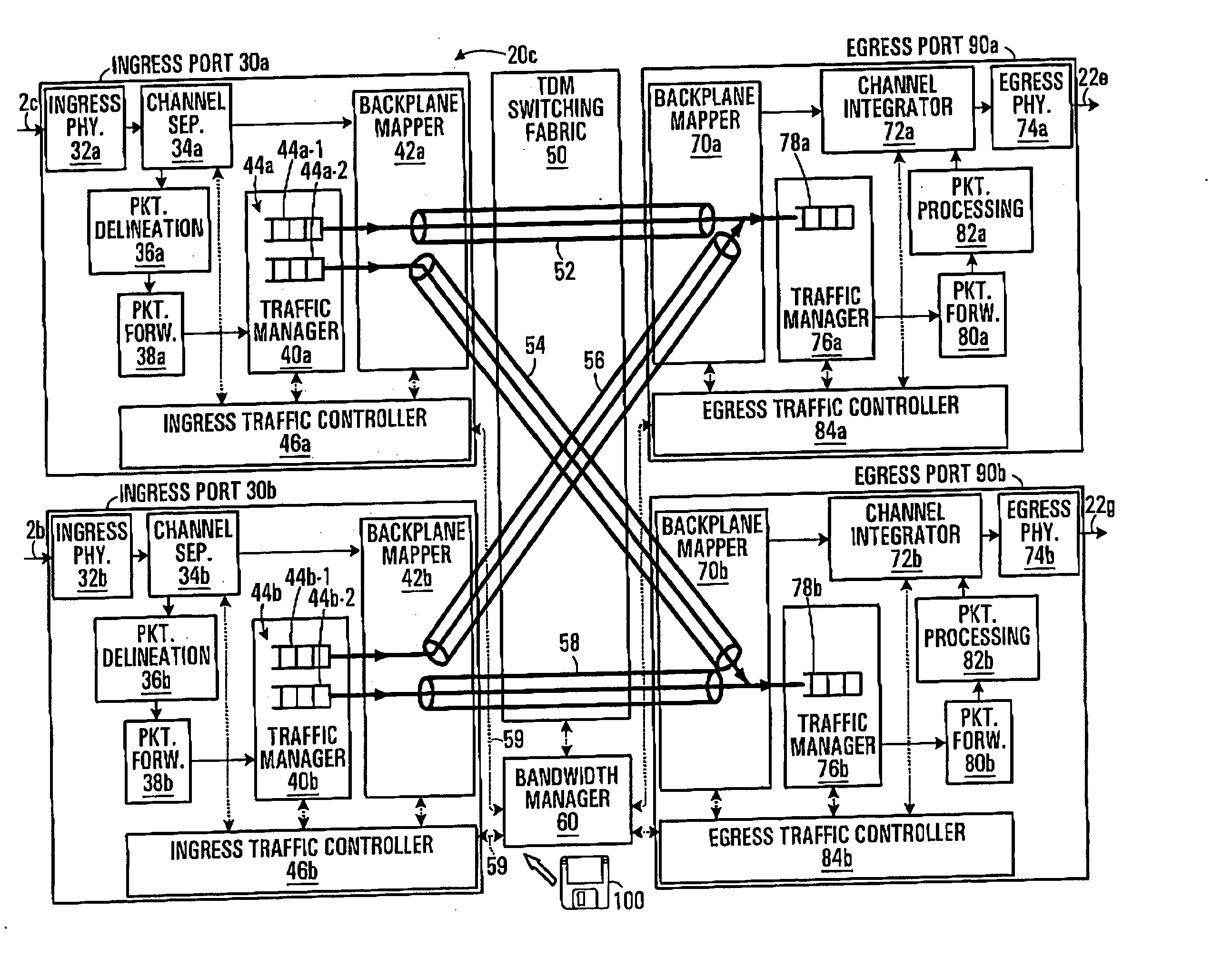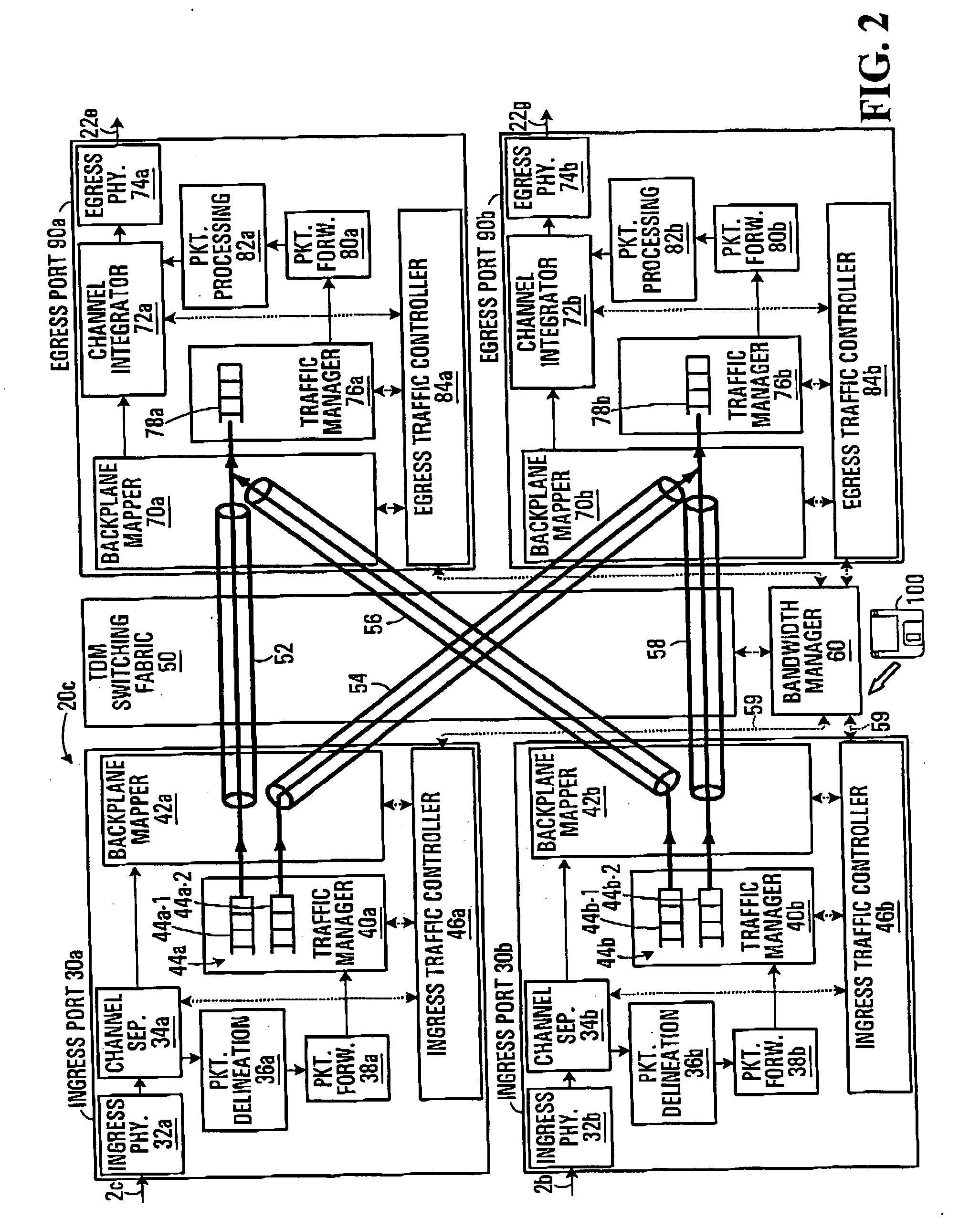Packet-aware time division multiplexing switch with dynamically configurable switching fabric connections
- Summary
- Abstract
- Description
- Claims
- Application Information
AI Technical Summary
Benefits of technology
Problems solved by technology
Method used
Image
Examples
Embodiment Construction
[0033] Referring to FIG. 1, a telecommunications network is illustrated generally at 10. The network 10 may be a portion of the PSTN or similar telephone network. The network 10 has a number of links 22a-22g (cumulatively links 22) interconnecting a number of switches 20a-20e (cumulatively switches 20). Links 22 are physical interconnections comprising optical fibres capable of transmitting traditional circuit-switched traffic (referred to as “voice traffic”) or packet-switched traffic (referred to as “data traffic”) by way of the Synchronous Optical Network (SONET) standard. Switches 20 are packet-aware TDM switches responsible for switching traffic between the links 22. Switches 20 are exemplary of embodiments of the present invention.
[0034]FIG. 2 illustrates an exemplary switch 20c in greater detail. The other switches of FIG. 1 (i.e. switches 20a, 20b, 20d and 20e) have a similar structure.
[0035] As shown in FIG. 2, switch 20c includes two ingress ports 30a and 30b, two egress...
PUM
 Login to View More
Login to View More Abstract
Description
Claims
Application Information
 Login to View More
Login to View More - R&D
- Intellectual Property
- Life Sciences
- Materials
- Tech Scout
- Unparalleled Data Quality
- Higher Quality Content
- 60% Fewer Hallucinations
Browse by: Latest US Patents, China's latest patents, Technical Efficacy Thesaurus, Application Domain, Technology Topic, Popular Technical Reports.
© 2025 PatSnap. All rights reserved.Legal|Privacy policy|Modern Slavery Act Transparency Statement|Sitemap|About US| Contact US: help@patsnap.com



